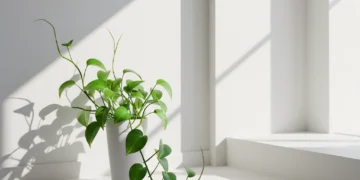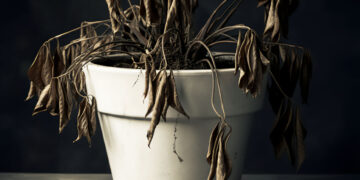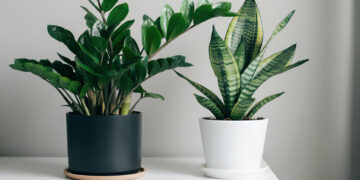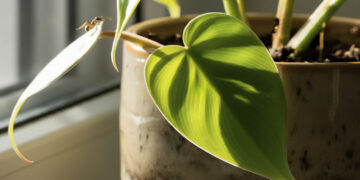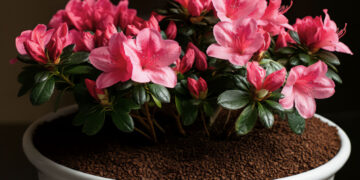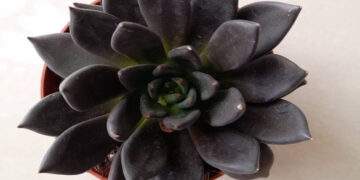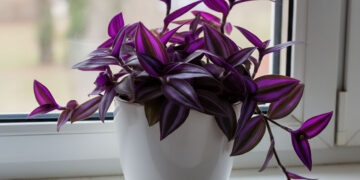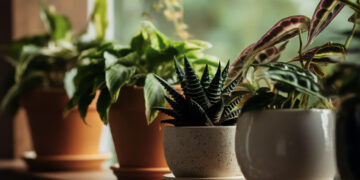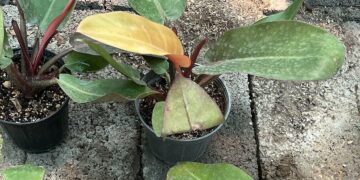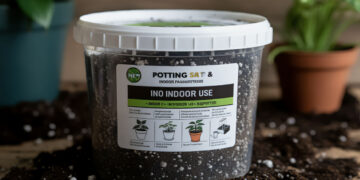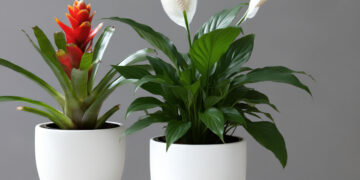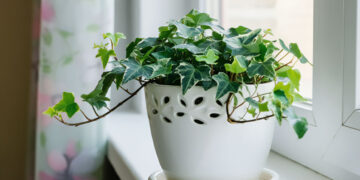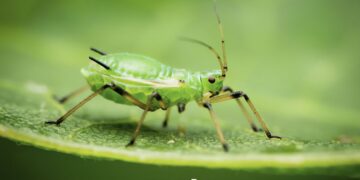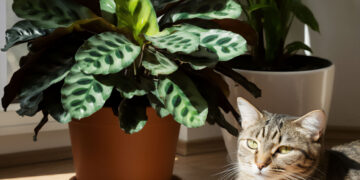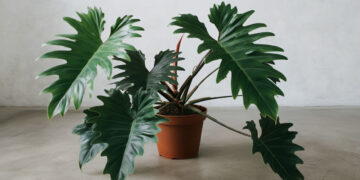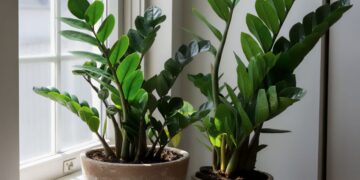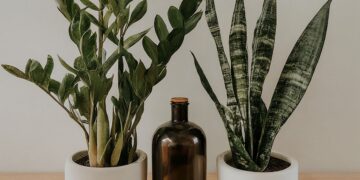Before bringing plants into your home, I recommend that you pay attention to your environment’s conditions. By following the tips in this article, you can have a healthy and thriving houseplant.
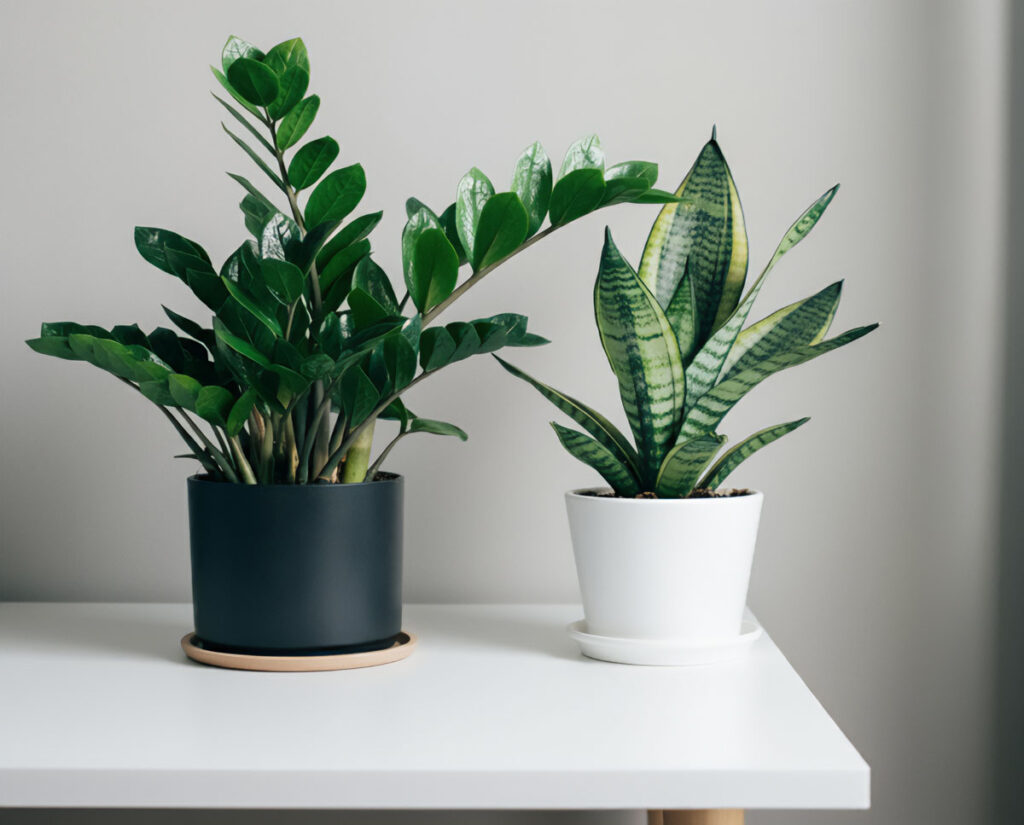
Selecting the Perfect Plant for Your Home
Before introducing a new plant to your home, it’s important to assess your environment carefully. Factors such as natural light availability, room temperature, and humidity levels play a crucial role in selecting the right plant. For example, if your space receives limited sunlight, low light houseplants like snake plants or pothos are ideal, although these plants grow even better with indirect or filtered sunlight.
Sunlit rooms, on the other hand, are great for sun-loving plants like succulents and cacti. Beginners might find success with low maintenance houseplants such as ZZ plants or peace lilies, known for their resilience and adaptability.
Aligning a plant’s native habitat with your home environment increases the chances of healthy growth while reducing stress on the plant.
1. Understanding and Meeting Light Needs
Different plants require varying amounts and intensities. Direct light refers to unfiltered sunlight that shines directly onto plants, which is suitable for species like succulents and cacti. Tropical houseplants, which originate from the understory of rainforests, often grow in indirect light, making them a great choice for indoor environments. Shade-loving plants should not be placed in direct sunlight as their leaves can get scorched.
On the other hand, sun-loving plants will stretch and become leggy if they do not receive enough light. To avoid this, rotate your plants periodically so they grow evenly toward the light source. If natural light is insufficient, consider using artificial grow lights—LED grow lights are particularly energy-efficient and offer the correct light spectrum needed for plant growth, especially during shorter winter days.
2. Mastering Watering, Drainage, and Soil Selection
Both overwatering and under-watering can harm plants. Overwatering leads to root rot, while under-watering causes wilting and leaf drop. Common houseplants, such as pothos and philodendrons, typically require regular but moderate watering. To avoid these issues, check soil moisture by inserting your finger about an inch deep—water only when the soil feels dry.
For sensitive plants, use room-temperature filtered or distilled water to avoid harmful chemicals like chlorine or fluoride found in tap water. Always ensure that your pots have proper drainage holes to prevent water pooling at the bottom, which can suffocate roots.
3. Effective Fertilizing Without Overdoing It
Potted plants exhaust soil nutrients over time and need regular fertilization, especially during their active growing periods in spring and summer. Air purifier houseplants like peace lilies or spider plants not only clean the air but also benefit from periodic fertilizing to keep them healthy. Use a balanced, water-soluble fertilizer every 4-6 weeks.
Too much fertilizer can lead to a buildup of salts in the soil, which may cause root burn and leaf discoloration. Always follow the recommended dosage on the fertilizer package, and if you suspect over-fertilization, flush the soil with water to remove excess salts.
4. Managing Humidity and Temperature
Many houseplants, especially variegated houseplants like the variegated rubber plant or pothos, grow best in higher humidity environments. Indoor heating and air conditioning often reduce humidity levels, causing plants to develop brown leaf tips or drop leaves. You can increase humidity by misting your plants, using a humidifier, or placing them on a tray filled with water and pebbles—just make sure the pots don’t sit directly in water.
Grouping plants together can also naturally raise humidity levels through transpiration. Ensure adequate airflow to prevent fungal issues, and maintain stable temperatures between 65°F and 75°F (18°C to 24°C). Avoid placing plants near drafts, heating vents, or air conditioners, as sudden temperature changes can cause stress.
5. Preventing and Controlling Pests
Pests such as aphids, spider mites, and mealybugs can quickly infest houseplants. Regularly inspect leaves (both tops and undersides), stems, and soil for signs of pests or damage. Early detection makes pest management easier and helps prevent infestations from spreading. If pests are detected, isolate the affected plant and treat it with natural solutions such as insecticidal soap or neem oil.
Different pests may require specific treatments, so be sure to follow the instructions carefully and repeat treatments as needed until the pests are eradicated.
6. Pruning, Shaping, and Maintenance
Pruning your plants regularly helps maintain both their appearance and health. Removing dead or yellowing leaves prevents your plant from wasting energy on non-productive parts, while also reducing the risk of disease. Pruning can also encourage fuller growth and help shape the plant. For example, pinching back the tips of hanging houseplants like philodendrons or pothos promotes lateral growth. Always use clean, sharp pruning shears or scissors to minimize stress to the plant.
7. Propagating Plants to Expand Your Collection
Propagation is a simple and cost-effective way to expand your collection. Depending on the plant species, you can propagate by stem cuttings, leaf cuttings, division, or layering. For example, succulents often propagate well from leaf cuttings, while blooming houseplants like peace lilies can be propagated through division. Research the best propagation method for each type of plant to increase the success rate.
8. Monitoring Health and Adjusting Care
Regular inspection of your plants helps you catch early signs of stress or disease. Symptoms like yellowing leaves, brown spots, or wilting can indicate problems with watering, lighting, or pests. Adjust your care routine based on your observations. For example, if a plant is overwatered, allow the soil to dry out more between waterings. If a plant is stretching or leaning towards a light source, it likely needs more light, so relocate it to a brighter spot or use grow lights as needed.
9. Adjusting Care for Seasonal Changes
During the colder months, most houseplants slow their growth, requiring less water and no fertilization. Adjust your watering schedule accordingly and stop fertilizing until spring.
To ensure they still receive enough light, move plants closer to windows or use grow lights. If you’re planning to repot houseplants, it’s best to do so in the spring when they begin their active growth phase. Shorter winter days mean less natural light, so rotating your plants regularly and cleaning windows to maximize light penetration will help them stay healthy.
If you have any questions about houseplant care, feel free to ask me in the comments section. I’d be happy to help!
source:
https://yardandgarden.extension.iastate.edu/how-care-houseplants
